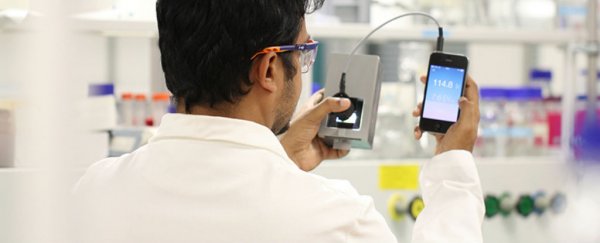Scientists have developed a new type of blood test that promises a quick and cheap diagnosis of diseases such as HIV, Ebola, and malaria, and can also identify levels of glucose or cholesterol in the blood, thanks to a 'quirk' in the laws of physics called birefringence.
The term refers to the way that light waves behave when passing through materials with a slightly more complicated crystal structure than normal - rather than the light bending slightly, as it does when passing through water or glass, it splits in two and essentially bends at two different angles. By adding certain enzymes to blood, birefringence can be used to identify the crystals that form to diagnose different types of disease.
One of the main advantages of this new blood test is that changes in the crystal patterns are visible to the naked eye, which makes a big difference for hospitals in remote parts of the world where the latest equipment or even electricity aren't always available.
All that's required for an accurate diagnosis, according to the researchers, is a couple of cheap, polarised filters (similar to those found in some sunglasses); the right enzymes; a blood sample; and the knowledge of which patterns to look out for. That means almost anyone could be given access to the technology at very little cost and only basic equipment.
In addition, by using a light meter and an app running on a smartphone, doctors are able to measure how far the disease has developed.
"Our test system can be extended to a large number of different viruses or bacteria. It is totally flexible," said one of the team, Jijo Vallooran from ETH Zurich in Switzerland. "Other than a refrigerator to store the antibodies and enzymes, the user needs only the box to detect the polarised light and the lipid carrier substance. This is very inexpensive. Our technology is very suitable for use in the field and the early detection of diseases."
The research team is now seeking funding and further support to make its proposed system a reality. The paper outlining the new test procedure has been published in Advanced Functional Materials.
H/T: Gizmodo
